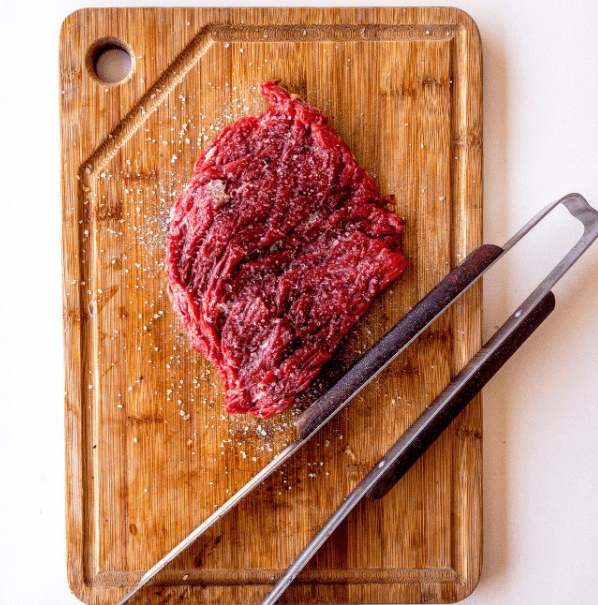One of the most used gadgets in the kitchen besides the stovetop is the cutting or chopping board. From the little crisp julienne vegetable cutting to filleting your salmon and cutting your meat, a chopping board is something you can never underestimate. It is an excellent investment that pays off for a long time by making your life easier and expediting your kitchen chores.
Additionally, having a chopping board also saves your countertops and other cutlery from being scratched when you chop items. It contains the mess that you can easily collect by the end of the task and throw away properly. If you do not already own a chopping board and want to make your cutting experience better, it is high time you buy one. If you have one and are looking for a new chopping board, this article is for you.
The foremost factor that pops up in our minds is the material of the chopping board. Wooden chopping boards look esthetically pleasing and have many other advantages over plastic ones. However, other factors you should typically look for when buying a chopping board include size, storability, and functionality.
1. Appearance
Besides the fundamental function of the chopping boards, it is also important how its looks go with the rest of the esthetics of your kitchen. Either you hang it somewhere or have it perched against the wall, the chopping board should look esthetically pleasing.
Tons of various options are available in chopping boards that give a rustic or classic look. Moreover, as you can use the chopping boards to serve different types of finger foods to your friends, it is important to consider their appearance.
2. Size of the board
The size of the board is another important factor that affects its functionality and usage. If you take the advice of experts, you should always go for the large-sized boards. Even if you have to cut a small item on the board, it is always convenient to cut it on a large chopping board, so the juice doesn’t run off the board and on the countertop.
3. Material of the Boards
From using them for chopping to cleaning and storing them easily, the material of the chopping board is very important. Some materials are better for cutting meat or poultry while others suit juicy vegetables more. Also, different materials may scar easily from knives that you usually use. So, it is highly important to be informed in every sense.
Wooden Chopping Boards
Buying wooden chopping boards is more durable than other materials. They last longer than the plastic ones and give a beautiful look to your kitchen. The only drawback that the wooden chopping boards present is their ability to absorb water. This implies that any juicy item that you chop or cut on the board is going to seep in and may contribute to a germ or bacterial infestation.
Nevertheless, chopping boards made of certain types of woods, such as maple, acacia, or teak, are less absorbent to water. Do not get chopping boards made of cypress wood as they are known for being more water-absorbent.
Bamboo Chopping Boards
Although chopping boards made of bamboo are the best eco-friendly option out there, they are not dishwasher-safe. They have to be dipped in hot soapy water to be washed off completely. Also, you have to air dry them before storing them. So, these chopping boards are a little high maintenance.
Chopping Boards Made of Glass
Glass chopping boards are an easy-to-clean option, and their surface is harder and firmer than wood or plastic. However, there is one drawback of these chopping boards: they cause excessive wear on the knives. Therefore, they are best saved for serving or decorative purposes.
Plastic Chopping Boards
The most common choice of materials when it comes to getting a chopping board is between plastic or wooden ones. Plastic cutting boards take a toll with regards to feasibility and functionality as they are easier to clean and store than wooden ones. Compared to wooden chopping boards that are hard to sanitize, plastic chopping boards can be cleaned off easily.
Additionally, researchers have repeatedly stated that as plastic is not as absorbent as wood, the water does not seep in deeply; thus, making it cleaner and easier to be sanitized.
4. Sanitation
Considering the points mentioned above, you should make an informed decision about the sanitation of the chopping boards you buy. This is an important factor to consider as this impacts the health of the whole family. Plastic chopping boards have an advantage over wooden ones in this regard. The lesser the absorption of water in the board, the easier it is to clean and sanitize.
5. Knives
You should also consider the types of knives you will use on the chopping boards before getting a new one or replacing your old chopping board. You should get a chopping board that goes easy on your knives and does not wear them out easily. Glass chopping boards are the worst for almost all kinds of knives. They are hard on them and force you to get new knives before their expected wear-out time. Wooden boards are the best in this regard. They go well with all types of knives and do not dull them.
Conclusion
If we talk about deciding among the materials, you should know that wooden chopping boards are best for raw meat or poultry. Experts state that they give a great amount of stability when cutting meat. If you can afford to get two types of chopping boards, then it is best to get a plastic one for vegetables and the wooden one for everything else.
This way, you can prevent cross-contamination between meat and veggies. Also, plastic, being less absorbent, will be easier to clean after you cut juicy veggies or fruits on it. Plastic chopping boards are also great for small tasks, such as cutting onions or dicing fruits.

